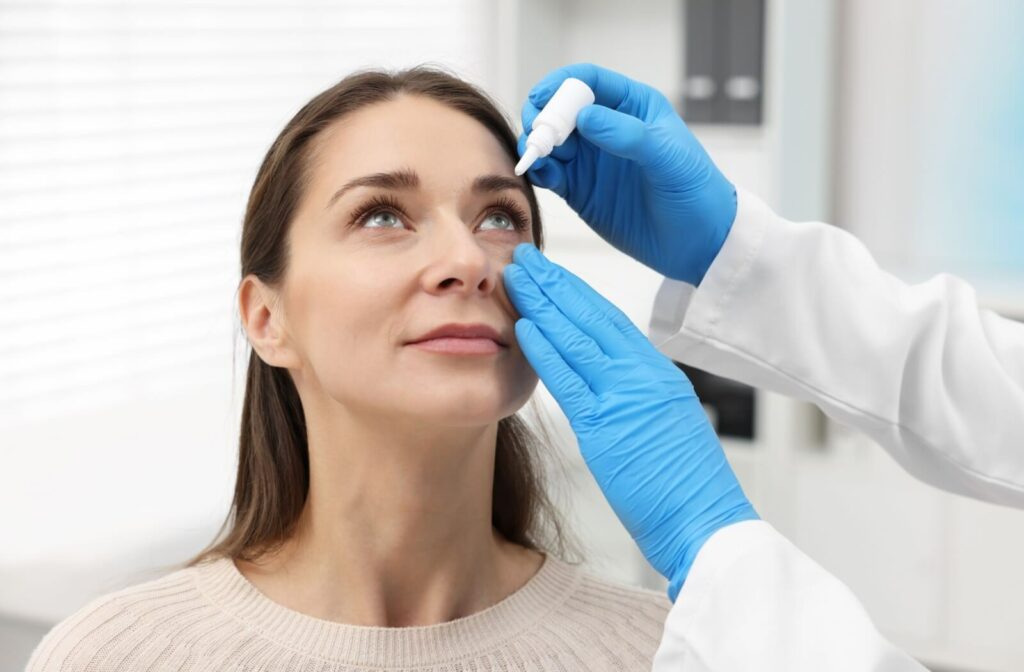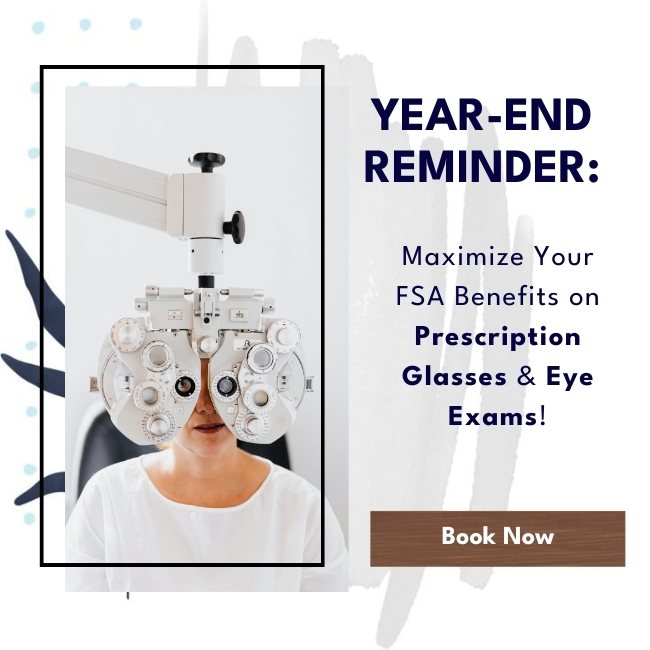Dry eyes and headaches are both common complaints, but surprisingly, they’re rarely talked about together. If you’ve ever dealt with both at once, you may have wondered if they’re connected, or if it’s just a coincidence.
While dry eyes don’t directly cause headaches, they can definitely contribute by increasing strain on the muscles around your eyes. Understanding this relationship can help you better manage recurring discomfort and take steps toward long-term relief.
What Is Dry Eye?
Dry eye occurs when your eyes don’t produce enough tears or when tears evaporate too quickly. It might sound like a minor nuisance, but tears play a major role in maintaining eye health: they lubricate the surface, remove debris, and protect against infection.
When tear production or quality is compromised, the result can be irritation, discomfort, and even blurred vision—symptoms that can impact your focus, productivity, and daily comfort.
What Causes Dry Eye?
Several factors can contribute to dry eye. Here are some of the common ones:
- Aging: Tear production naturally declines as we age, making dry eye more prevalent in older adults.
- Environmental factors: Wind, smoke, and dry air can all strip moisture from the eyes.
- Screen time: Long hours in front of screens can lead to reduced blinking, which decreases eye lubrication.
- Medical conditions: Certain autoimmune disorders, such as Sjögren’s syndrome or rheumatoid arthritis, can affect tear production.
- Medications: Antihistamines, decongestants, or antidepressants can sometimes reduce tear output as a side effect.
- Contact lens wear: Extended contact lens use can upset the natural balance of moisture on your eyes.
Symptoms of Dry Eye
Dry eye isn’t just about dryness. It often comes with a range of other symptoms, including:
- Burning or stinging sensations in your eyes
- Redness or irritation
- Sensitivity to light
- Blurred vision during focused tasks like reading or screen use
- A sensation that there’s something gritty in your eyes
- Excessive tearing due to eye irritation
If you’re experiencing any of these symptoms regularly, it might be time to discuss treatment options with your eye doctor.
The Link Between Dry Eye & Headaches
At first glance, dry eyes and headaches don’t seem directly related. But the truth is, your eyes are one of your body’s most sensitive areas, and when they’re in distress, it can lead to headaches. Here’s how the connection works.
Eyestrain & Muscle Tension
When your eyes are dry, they have to work harder to focus and maintain clarity. This additional strain can tire out the small muscles around your eyes, leading to tension. Over time, tension can spread from the eyes to the forehead, temples, and even the neck, contributing to headaches.
Tension Headaches
The most common type of headache, tension headaches typically feel like a dull, tight band of pressure around the head. Dry eye can intensify this pain by adding strain and visual discomfort to the mix.
Migraines
If you’re prone to migraines, dry eyes can be a trigger. When the cornea (the outermost layer of your eye) becomes irritated from dryness, it can activate your sensory nerves. This process may release discomfort-inducing substances in the body known as neuropeptides, which can jump-start migraine symptoms like discomfort, nausea, and light sensitivity.
Nerve Pathways
The cornea is packed with nerve endings. If dry eye irritates this area, it can send amplified discomfort signals to the brain, intensifying the sense of discomfort. Essentially, your dry eye may indirectly aggravate any existing headache symptoms.

How to Prevent & Manage Dry Eye-Related Headaches
Managing dry eye can significantly reduce the frequency and severity of headaches associated with eye strain. Here are some strategies to keep your eyes hydrated and headaches at bay:
Hydrate Inside & Out
Start with the basics. Drinking plenty of water is essential for your overall hydration, and your eyes are no exception. Pair this with lubricating eye drops (also called artificial tears) to add moisture and soothe your eyes.
Create a Moisture-Friendly Environment
Your surroundings can have a big impact on your eyes.
- Use a humidifier to add moisture to the air, especially in dry or air-conditioned spaces.
- Avoid direct airflow from fans or vents aimed at your face.
- Wear UV-protective sunglasses outdoors to shield your eyes from sun and wind exposure.
Take Screen Breaks
Spending long hours in front of a screen? Try the 20-20-20 rule to give your eyes regular breaks. Every 20 minutes, look at something 20 feet away for at least 20 seconds. This simple habit helps reduce eye strain and maintain tear film stability.
Add Omega-3s to Your Diet
Omega-3 fatty acids can improve tear quality and help manage dry eye. Foods like salmon, flaxseeds, chia seeds, and walnuts are great sources. If diet alone isn’t cutting it, talk to your eye doctor about supplements.
Consider Professional Treatments
For chronic or severe cases, medical treatments, such as OptiLight therapy, which uses safe, precise light pulses to alleviate dry eye symptoms by improving tear stability and reducing inflammation, can make a big difference.
Persistent dry eye symptoms shouldn’t be overlooked. Consider scheduling an eye exam to assess your condition and develop a personalized treatment plan.
Don’t Let Discomfort Control Your Day
Dry eye may seem like a small issue, but its impact on your comfort, concentration, and quality of life can be significant—especially when headaches come into play. By making simple lifestyle adjustments and seeking professional care when necessary, you can help protect your eye health and reduce headache symptoms.
At Eyedeal Eyecare, we are committed to helping you improve your quality of life through personalized treatment and solutions for dry eye management. Don’t wait for discomfort to take over your day. Book an appointment today and take the first step towards brighter, more comfortable vision.




